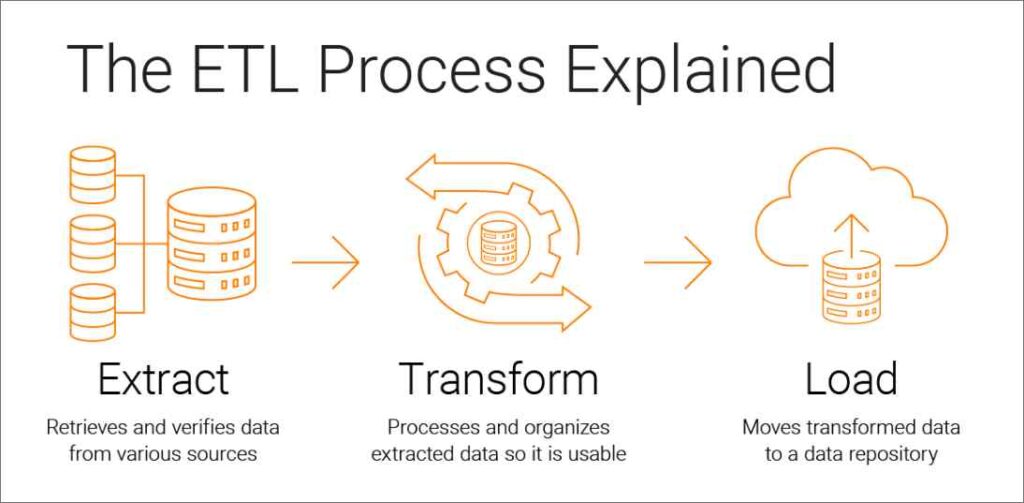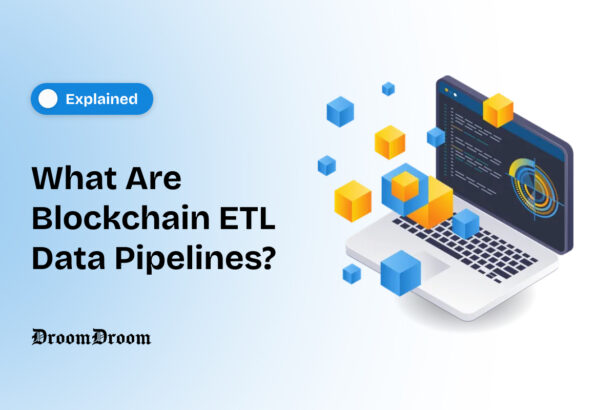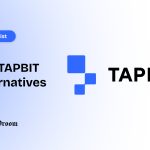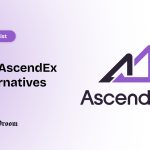Blockchains are a treasure trove of data. The transparency and immutability of data in public blockchains make them a reliable resource for trustless verification and data analysis.
The caveat is that extracting and managing this rich data from these DLT systems is challenging given the sheer volume and the way they are stored (distributed across many nodes). This necessitates robust and efficient processes that would work seamlessly to manage and make sense of this unorganized but promising data.
That’s where ETL pipelines come in.
This article explores ETL data pipelines in the context of blockchains to understand how they can transform and organize raw ledger data.
What is ETL and Why It Matters
ETL, short for “Extract, Transform, Load”, in the context of blockchain, is a technical process whereby unstructured and non-human-readable data is compiled, segregated, and translated to provide actionable insights.
The ETL process involves three main steps:
- Extract: Extraction involves collecting data from various sources and databases. The goal is to gather raw data, regardless of its format or structure.
- Transform: In the transformation phase the raw/unstructured data is cleaned, formatted, and transformed into a suitable structure for analysis.
- Load: The transformed data is loaded into a target data storage system, like a data warehouse or data lake so that data is readily available for analysis, reporting, and decision-making.

Insightful data is the linchpin of business intelligence, and ETL pipelines are the foundational processes that allow organizations to make sense of the abundant data. The pipeline adheres to a specific set of business rules for cleansing and organizing unstructured data. This data is then passed on to data analysts who perform data-driven predictions, product leaders who evaluate inefficiency, and executives who make high-value data-driven decisions.
Beyond business intelligence, ETL is also critical to ensuring data integrity, migrating data across databases, and improving data governance. These processes help consolidate data from various sources into a single, coherent view for organizations to derive actionable insights that facilitate better decision-making.
In regions with strict data protection laws, ETL is essential for maintaining data compliance with regulatory requirements. The process involves anonymizing sensitive information, enforcing data retention policies, and maintaining audit trails to demonstrate accountability.
ETL Processes in the Context of Blockchain Data
The peculiar nature of DLT systems makes ETL pipelines indispensable for data analysis. Blockchain data is very different from traditional data sources.
looking for top coinmarket communities to stay updated about crypto? click this link to learn more.
Broadly, blockchain data has four properties:
- Decentralized: Stored across a network of nodes, not in a central/single database.
- Immutable: Once a block is added to the chain, its data cannot be altered (probabilistically).
- Cryptographically Linked: Blocks are linked using hashes, making it tamper-evident.
- Diverse: Different blockchains have varying structures and data formats.
These unique traits of on-chain data require ETL processes to be adapted differently from off-chain data (traditional data).
Here’s a breakdown of what happens in each of the three phases of an ETL pipeline in a DLT system.
Extract
Data in DLT systems are fragmented and stored across many nodes and the extraction process involves compiling data from all of these distributed data sinks.
On-chain data is primarily obtained from 3 places:
- Full nodes: Store the entire history of the blockchain.
- Light nodes: Store only the most recent transactions and headers to prioritize speed.
- APIs: Public or private APIs to access blockchain data.
You can extract all essential on-chain data to create robust ETL pipelines. Below is a detailed table describing the various data types available on-chain.
| Type of Data | Description | Examples of Extracted Information |
| Transaction Data | Detailed records of individual transactions on the blockchain. | Sender and receiver addressesTransaction amountFeesTimestamps |
| Block Data | Information about the blocks in the blockchain, which contain multiple transactions. | Block numberTimestampMiner addressBlock hashList of transactions |
| Smart Contract Data | Data related to smart contracts, including their deployment and execution. | Contract addressEvent logsFunction callsState changes |
| Token Data | Information about token transfers and balances. | Token transfer detailsToken balancesToken metadata (e.g., name, symbol) |
| Event Logs | Logs generated by smart contracts, recording specific events and interactions. | Event typeEvent parametersTimestamp of the event |
| State Data | The current state of the blockchain, including account balances and smart contract states. | Account balancesSmart contract statesNonce values |
| Metadata | Supplementary data that provides context about transactions and blocks. | Gas pricesGas limitsInput data (for transactions)Network difficulty |
| Consensus Data | Information related to the consensus process of the blockchain network. | Validator identities Voting results Proposals and approvals |
| Historical Data | Archived data representing past states of the blockchain. | Past block data Historical transaction records Previous smart contract states |
When building ETL pipelines with a provider, say Alchemy, developers can visually choose the chains, data sources, and destinations, and load them in seconds.
Transform
Once the engineer/developer has compiled data from different sources, the next step is to transform it and make it usable for ingestion.
Depending on the data sources and your specific requirements, you’d have to filter out any unwanted metadata, validate transaction integrity, merge duplicates, standardize formats, etc.
If off-chain data is involved, like entity information for transactions, then the data engineer should also enrich the data by linking it with other data sets.
Further, traditional blockchain node setups store data asynchronously, meaning data is written and propagated across the network at different times. Therefore, the transformation phase also includes validating the data with other nodes in the network to ensure completeness.
Load
The last phase in the ETL pipelines is to load the transformed data into a storage system, like AWS S3 or MongoDB.
There are many types of data storage solutions; data warehouses, data lakes, and data vaults. The choice of data storage solution depends on the specific requirements of the use case.
Data warehouses are optimized for structured data and support complex queries, making them ideal for business intelligence applications. Data lakes, on the other hand, can handle large volumes of unstructured and semi-structured data, offering flexibility for various analytics tasks.
Depending on the system architecture and the volume of data, different loading methods can be employed:
- Batch Loading: Here, large volumes of data are loaded at preset intervals. It’s suitable in conditions where real-time data access is not critical. Batch loading can be resource-intensive but allows for comprehensive data updates.
- Stream Loading: For applications requiring real-time or near-real-time data access (like fraud monitoring and detection), stream loading is used. This method continuously loads data as it becomes available, ensuring that the latest data is always accessible for analysis.
Blockchain ETL Use Case Examples
Market Analysis
On-chain market analysis is very complex due to the sheer volume of data involved and in a fragmented manner. Blockchain ETL pipelines can help by providing structured and actionable insights.
For instance, the siloed and fragmented nature of most DLT systems makes it difficult to aggregate and analyze data from a single source of truth. Here, ETL pipelines can extract data from multiple nodes and across networks, and transform it into a cohesive dataset. This integration ensures that analysts have access to comprehensive and consolidated market data, enabling holistic analysis.
Token Analysis
By analyzing token transfers, smart contract events, and token balances, we can uncover insights into token distribution, holder concentration, and token flow dynamics.
ETL pipelines can extract data from multiple blockchain networks, DEXs, and token smart contracts, and then consolidate it into a cohesive dataset. This integration ensures comprehensive coverage of token-related information, facilitating thorough analysis.
dApp Analysis
Decentralized applications (dApps) generate mountains of user and each of them can have their own data structures and standards. Aggregating this from multiple sources and networks can only be done efficiently using ETL pipelines.
These pipelines can extract and transform large-scale on-chain user behavior data into useful and actionable insights.
Ensuring data quality and consistency is critical for accurate dApp analysis. Inconsistent or erroneous data would inadvertently lead to flawed insights and decisions.
ETL pipelines clean, validate, and standardize DeFi and dApp data during the transformation phase. They remove duplicates, correct errors, and ensure that the data is consistent and accurate. This data quality assurance is vital for reliable analysis.
Challenges with Building Your Own Blockchain ETL Pipeline
If you’re considering implementing ETL for on-chain data, you need to decide whether to construct the pipeline infrastructure in-house or leverage third-party resources. Oftentimes, building your own pipelines introduces a plethora of complexities.
Let’s review a few of the most notable challenges that make self-hosted, ETL solutions difficult.
Large Data Volumes
The amount of data on distributed ledgers, such as blockchains, is always increasing since they are designed to be updated continuously with every transaction and piece of information added to them. This is especially true for popular blockchains like Ethereum or Bitcoin. The volume may be in the order of terabytes.
It is usually not possible to manage this scale with traditional databases. Instead, specialized blockchain databases, distributed file systems (like IPFS), or cloud storage (like AWS S3) are required.
The volume of data makes it necessary to have enormous computing power in order to effectively extract, convert, and load. This frequently entails using cloud-based services or distributed processing frameworks like Apache Spark.
So, how is this much data handled in blockchain ETL pipelines?
Instead of pulling all data at once, intelligently drafted queries extract only the necessary information for the specific analysis. Only new data since the last extraction is processed, reducing the load.
Irrelevant data is filtered out, and aggregation is used to summarize information, reducing the dataset size.
For loading to the target storage systems, data is split into smaller, manageable partitions for faster loading and querying.
Network Updates and Chain Reorgs
A chain reorganization, often known as a “reorg,” happens when a blockchain splits momentarily into two or more rival chains. Several things contribute to this:
- Network Latency: Nodes in different locations receive blocks at slightly different times.
- Mining Race: Two miners solve a block almost simultaneously, leading to temporary forks.
- Consensus Issues: Rarely, disagreements in the network’s consensus mechanism can cause longer-lasting forks.
Usually, these forks are resolved quickly as the network converges on the longest valid chain (the one with the most proof-of-work or stake). The blocks on the shorter chain are discarded, and the transactions within those blocks are “reorganized” onto the winning chain.
Despite being a common occurrence and never really impacting the DLT system adversely (as they are quickly resolved), regorgs pose a challenge to ETL pipelines. The divergence caused by chain forking during a regorg invalidates previously extracted data. If an ETL pipeline has already processed data from a block that gets reorganized, it needs to:
- Detect the Reorg: Monitor the blockchain for reorg events.
- Rollback: Discard the processed data from the orphaned blocks.
- Reprocess: Re-extract and re-process the data from the new, valid blocks.
Complexities with Different Data Structures
Each blockchain has its unique design choices, resulting in diverse data structures. This impacts how data is stored, organized, and accessed, posing challenges for ETL pipelines designed to work across multiple chains.
- Bitcoin uses a UTXO model. Here, pipelines must trace UTXOs across transactions to calculate balances and track ownership, which can be computationally intensive.
- Ethereum has an account-based model. While this is simpler for balance tracking, smart contract data (events, storage) requires complex parsing and interpretation due to its unstructured nature.
- Solana employs a history-based model. It requires specialized knowledge of Solana’s data structures and APIs to extract and interpret the data correctly. Solana ETL pipelines often use the Solana JSON RPC API and may need custom logic to reconstruct transaction details from historical records.
Conclusion
Blockchain ETL pipelines are foundational to unlocking the full analytical potential of decentralized systems.
Building and maintaining these pipelines is very complex. It involves trivial tasks like managing chain-specific data models to handling reorgs and scaling for terabytes of transaction data. However, the payoff is a clear, structured view of blockchain activity that powers everything from compliance and governance to dApp metrics and token analytics.
In many ways, the future of data-driven decision-making in web3 depends not only on what’s on-chain, but on how well we pipeline it.




















